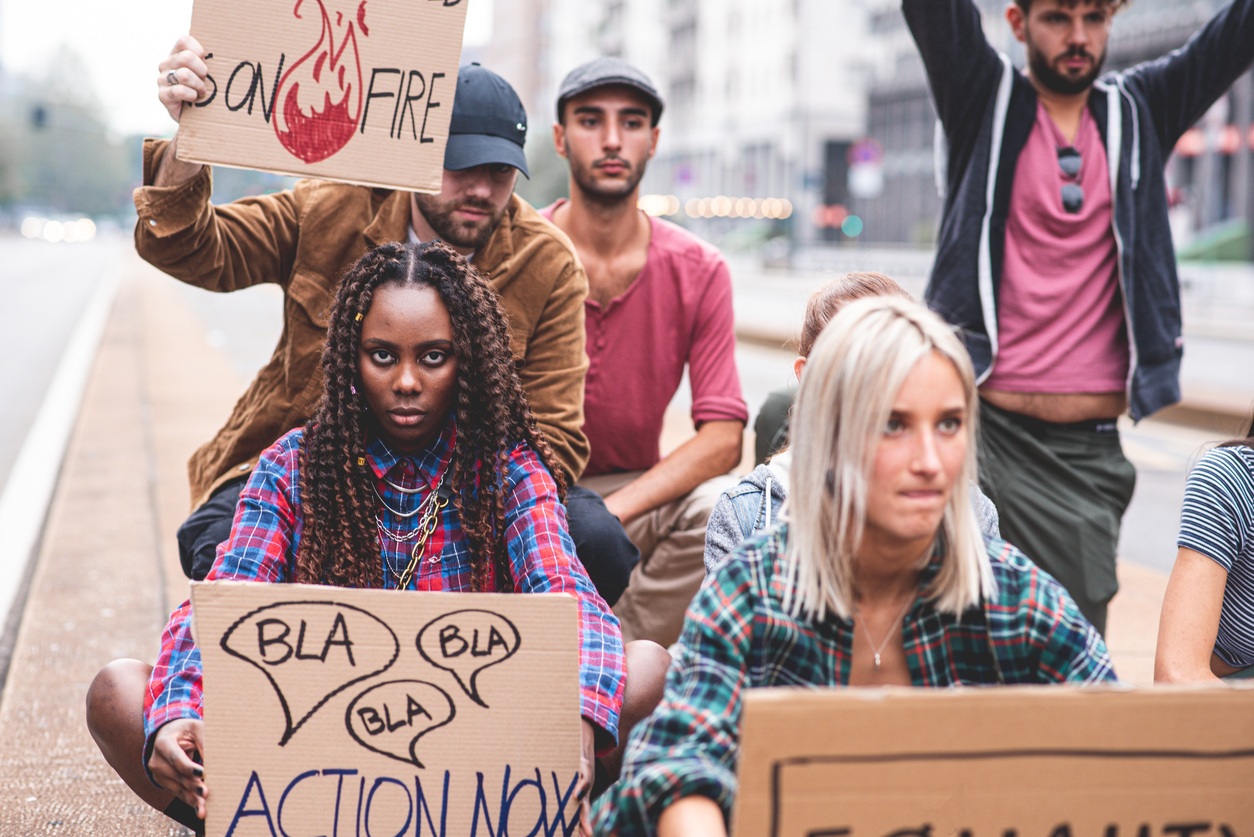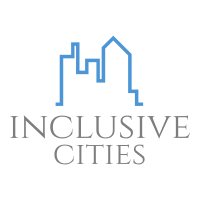Introduction: defining empowerment
Empowerment is a widely used concept among NGO workers, activists, change makers and representatives of public authorities. We all would like people we work with to feel more empowered, to be more in charge of their own lives, and to eventually become change makers, who can undertake activities and develop initiatives aiming at making their communities better. We design our projects around the concept of empowerment, but not very often we ask ourselves the most important questions: what does empowerment really mean?
As we have seen in the previous chapters, defining concept that seem very basic and that are widely used, such as community for example, is not actually such an easy, straightforward task. However, it is of crucial importance to make an effort and come up with a working definition, because the better we understand the concept we use, the more likely we are to design projects and activities that are successful, sustainable, and lead to the accomplishment of the goals we have in mind.
Let’s try to analyze some definitions
When it comes to a general, common understanding, empowerment seem to be a lot about the power. According to the Cambridge dictionary definition of the word, empowerment is:
“the process of gaining freedom and power to do what you want and to control what happens to you.”
This is a common understanding of empowerment, and it is not entirely wrong, because yes, empowerment is a lot about power and control. However, this definition is focused on individuals, and does not indicate that empowerment can not only concern individuals, but also groups, which is really important especially in the context of community building. Moreover, the definition is not entirely helpful as it doesn’t really gives you any understanding of how the empowerment really happens. It focuses on the results, indicating that it is all about the outcomes, that are understood as everyone doing what they want to do, and this is hardly attainable and realistic when you talk about social community projects in urban setting.
Working definition
To address the issues that are lacking in the common, basic understanding of the concept, we would like to propose our own, working definition of empowerment as follows:
Empowerment is the process of increasing the capacity of individuals or groups to make choices and to transform those choices into desired actions and outcomes.
You can of course choose a different definition, but whatever you decide upon, always remember that empowerment is actually a process. This is crucial to keep in mind whenever you plan any educational activities or projects for learners at risk of exclusion or adults with fewer opportunities. Many of us make the mistake of assuming that a one-time action, such as a short workshop, can result in empowerment of the people to whom we address our educational offer, but especially when you are planning to achieve long term, sustainable results related to building more inclusive urban communities, this might not be enough.
This is not to say that short term projects do not make sense – organizing a short community event or a weekend training course can be really helpful and bring very positive results, such as raising your participants’ skills and feeling more connected fo the community they live in. However, if you would like to provide more structured support on their way of becoming empowered and learning how to be community change makers, you should focus on more long-term planning. The activities you propose should be connected to one another and gradually you should they should be more “difficult” – meaning that more responsibility for planning, implementing, and evaluation them should be given to your participants, so that in the end they do not need you anymore, because they gained enough skills and knowledge to run their own projects aiming at building more inclusive urban communities where people feel more included.
Empowering individuals
The definition mentions that empowerment can be a process that affects both groups and individuals. It is important to realize the distinction and make sure that you as leader and educator committed to create better urban spaces, direct your actions in a way that helps your participants achieve empowerment on both levels.
Individual empowerment means that the person has taken more control over their life, realizing what is their situation and the circumstances and having a concrete plan as for how to face the limitations and challenges they are encountering. To achieve this, one needs to have a lot of awareness on their own life situation – this means that they understand their limitations or difficulties stemming from their socio-economic or cultural background. Once the people you work with understand and fully acknowledge their limitations and lacks, they can take action and improve. Generally, awareness among your participants is necessary for every project you do, because once they (and you) understand the needs, you can direct them more effectively to use community resources.
What is more important though, it that the adults you work with also realize that they have a POTENTIAL that can help them grow, so they are aware of their competences and other assets they can use to improve their life. Your role as an educator is to create an environment and conditions that will help your learners to become aware of their potential and to practice their skills, so that they gain confidence that will allow them to bring about a change they desire in their life and their communities.
Community empowerment
Our project and this guidebook are strongly focused on exploring the ways and approaches that can successfully lead to building more inclusive, open and resilient urban communities. You might now ask yourself, why do we then devote so much space to understand empowerment of individuals? This is because collective empowerment on the community level is not possible to attain without making sure individuals feel empowered first.
Empowerment is a continuum, a process that has specific, defined stages as follows:
Creating groups with shared interests/needs
Establishing organizations representing these interests/needs
Different organizations come together to collaborate in order to achieve the common goal
Developing social movements
Taking the above into consideration, community empowerment can be defined as
intentional ongoing process centered in the local community, involving mutual respect, critical reflection, caring, and group participation, through which people lacking an equal share of valued resources gain greater access to and control over those resources
Here is an overview of how the process and outcomes for individual, organizational and community empowerment looks like:
Participation in community organizations
Perceived control and resource mobilization skills
Collective decision-making, shared leadership
Organizational development, networks, policy leverage
Collective action to access resources
Pluralism, coalitions, accessible resources
It is of crucial importance to have a proper understanding of empowerment on these all these different but interconnected, interrelated levels, so that the community actions you organize are taking into consideration different aspects of empowerment. The risk is to focus only on designing actions addressed to individuals at risk of exclusion, which might be effective to some extent, but it is not very likely to help you achieve a greater, sustainable change on the community level.
It may sound overly simplified, but on a very basic, intuitive level empowerment really is about power. Notice how the language we use is shaping the reality and setting the relations dynamic. There is a great difference between saying that our goal is for our beneficiaries to take back to power and saying that our goal is to give the power back to them.
When you build your projects on the idea that you are there to create opportunities for them so that eventually you can give them the power, you put yourself in a position of dominance that underlines your beneficiaries’ weaknesses. This is quite dangerous as it can lead to adopting the attitude of I know better what they need.
The key to creating an environment that supports people’s way towards empowerment is truly understanding and admitting that people are the experts when it comes to their own lives. Coming back to the definition given earlier, empowerment is about people making their own choices, and implementing changes that are based on these choices. That is why we, as educators need to make sure that the activities or projects we organize are based on what our participants really want and need, not on what we think is best for them. This has to do a lot with letting go of your own ego, admitting that the projects are not about you designing great actions for them whom you see as helpless. It is about following your beneficiaries and giving them tools to achieve what they need and want, believing in their power, and understanding that the greatest success is when they don’t need you anymore.
Once you understand what the needs of your target group are, design your activities accordingly, keeping in mind that empowerment is best achieved through active participation. This means, that also here you should take care of establishing a proper dynamic, not putting yourself in a position of the expert who knows best. Be there when your participants need you, share your skills and knowledge, guide them, but don’t come up with ready solutions. If you have an opportunity of working with the same groups of beneficiaries for an extended period of time, gradually share responsibilities with them, supporting them in becoming leaders or initiators. And when the time comes and they don’t need your support anymore, celebrate!
All in all, the most important thing to understand when it comes to empowerment is the question of who the expert is when it comes to people’s lives. Many activists, NGO workers, and representatives of public institutions, start their activities with a wrong attitude, which then prevents them from achieving positive, sustainable, and long-lasting change that is widely accepted among the community members. The attitude is based on the concept that people who are in charge of designing and implementing projects are the experts who know best what people want and need. Starting your activities and designing them from this perspective can lead to implementing a project that has some results. However, approaching the community building from this perspective often leads to activities that are not very engaging that tend to have effects that are short term and don’t bring about any real change. This is because when you position yourself as the expert who knows best what problems your community faces and what could be the possible solutions, in many cases you might be actually wrong, so that you do projects that are not based on real needs and wants of your community. In result, the solutions you implement are not very relevant. To change this, it is necessary to develop a different approach that is based on the understanding that people are the experts of their own lives – they know what they need, and if you give them space, opportunities, and support, they will eventually come up with a solution that is not only effective, but also long lasting and sustainable.


